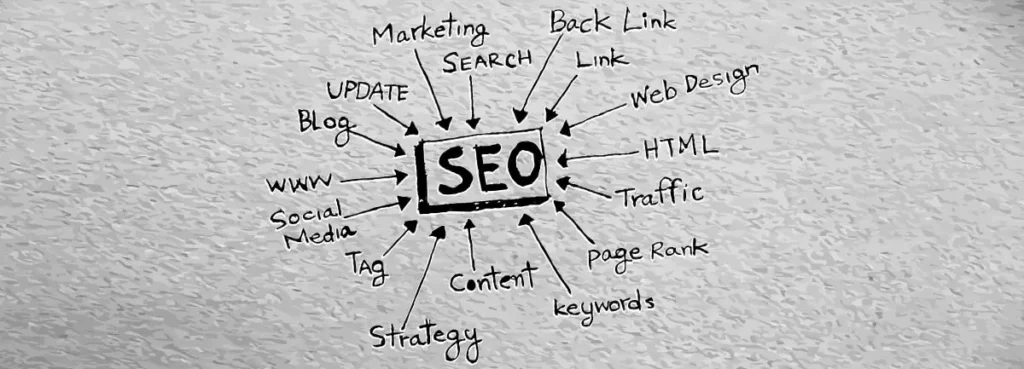You’ve signed off the design, the developer is making the last few tweeks to the template, and you’ve invested in professionally written copy to make sure your website gives off a great impression to potential customers.
But the hard work isn’t over as soon as you hit the ‘live’ button, I’m afraid!
Now, you need to start thinking about how you’re going to drive traffic to your beautiful new business platform.
You can raise awareness of your business website in plenty of ways, but the marketing methods I’ve listed below are perhaps three of the most common – and, in my experience, the most effective.
Read on for insights into the inner workings of organic SEO, paid search marketing and social media marketing.
1. Organic SEO
Organic search engine optimisation (SEO) involves getting your website pages to rank for certain search terms in Google, Bing and the other frequently used search engines.
Typically, SEO can be broken down into three areas.
Onsite SEO: This involves making sure that the content and meta data on each page of your website is fully optimised for the search phrases that are relevant to your business, and adjusting the design and layout of your pages to make sure they are simple to understand and easy to navigate.
Content Marketing: Blogging is a great way to boost your online profile and reach a wider audience. But it’s not the only way you can raise awareness of your business by publishing useful content. Successful online companies will regularly produce e-books, white papers, infographics and videos to increase customer engagement and cement their products or services in the minds of their users.
Link Building: If you want to give your site pages the best chance of top search engine rankings, you’ll need to start acquiring backlinks from other relevant, authoritative websites. Backlinks from reputable sources will tell Google, Bing et al that your business is credible and that your content is valuable to other users, because they’ve been eager to share it amongst their own communities. Links are essentially ‘votes’ for your site – and the more ‘votes’ you get, the more exposure you’ll get from search!
You’ll need to invest in each approach if you want sustainable, long-term results from your SEO campaign. As you can imagine, it takes time and dedication to dominate the organic listings, but if you stick to best practices and commit to a suitable SEO strategy, you’ll start to notice that your pages are getting more clicks and you’re generating more revenue from search sources. Alternatively, you can always ask for guidance from a specialist SEO consultant.
2. Paid search
Ever seen the listings marked as ‘Ads’ at the top of Google’s search results? Businesses like yours are paying to appear above and beyond the organic listings. They’re running a paid search campaign with Google Ads, which enables them to bid for premium advertising space right at the top of the search page and get what they offer right in front of people who are likely to buy from them.
Facebook, LinkedIn and many other social networks offer a similar paid search model to help companies gain more exposure from their platforms.
Paid search is a fantastic marketing approach for those who want to get fast exposure from some of the most visited websites in the world. But this exposure comes at a price. You’ll need to pay a fee every time someone clicks on your ad, and there’s no guarantee that the user will turn into a paying customer, so a return on this investment is never guaranteed.
To increase your chances of achieving a conversion from your paid search ad, you’ll need to link the reader to a highly targeted landing page on your site that not only contains the information they’re searching for, but also persuades them to either make an enquiry or purchase a product. You’ll also need to make sure that you’re ranking for the right keywords to begin with.
That’s why it’s so important to ask for help from an experienced paid search manager. He or she will be able to develop an effective targeting strategy and create irresistible content that maximises your chances of making that all-important sale.
3. Social media marketing
Social marketing isn’t for everyone – but many of my clients have grown their businesses by being active on Facebook, LinkedIn, Twitter and many of the other popular social networks.
Promoting your goods via social media will naturally put you in front of a wider audience, and it will lead to heightened recognition, because users will start to recognise your posts and your branding. They might not need your products or services right now, but they’ll remember you when they do!
Plus, you can use social media to interact with other users. You can give them the opportunity to ask questions and share their feedback without having to go through the more formal route of phoning or emailing you.
Much like SEO and PPC, crafting a strong social presence requires time and commitment. You have to be consistently active across your platform(s) of choice if you want to really make an impression on other users. If you don’t think you will have the time to dedicate to your social media strategy, you can always ask a dedicated social media manager to step in and take over the day-to-day running of your accounts for you.
